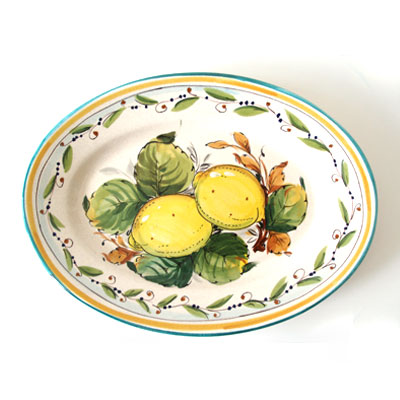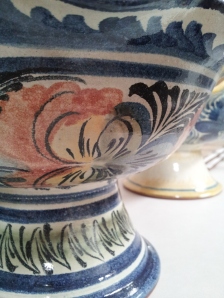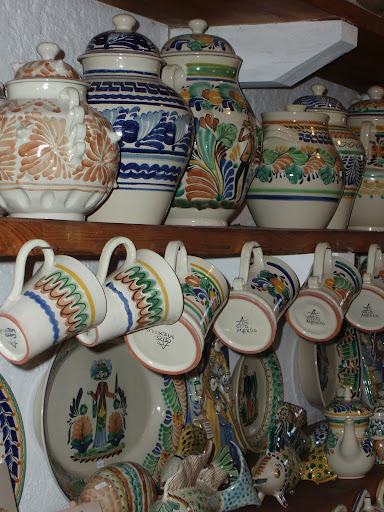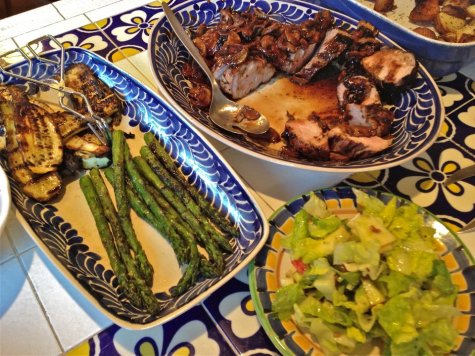
I’m planning to go to Italy in the spring to look for new artists to add to the Emilia Ceramics collection. There are so many traditional patterns used to decorate Italian ceramics, from intricate Deruta patterns to the whimsical animals of Vietri dinnerware. Many of these motifs are nature-inspired, with fruits, flowers, and animals common for Italian majolica pottery.
Lemons, for example, are a widely used pattern. The bright yellow can be paired with deep cobalt blue backgrounds or creamy white, giving a very different look to the piece. Cheerful serving pieces are typical, like the blu limoni serving tray by the brothers at Ceramiche Bartoloni.
A totally different look, this oval serving platter is subtle, refined, and has a refreshing color pallet.
Cherries are another of my favorite fruit motifs. Mixed with greenery, they enliven plates, mugs, and pitchers of various sizes. The deep red of the glaze is quite striking and gives an almost modern sensibility to this unusual pattern.
Of course, there’s no reason to stop at just one fruit. Mixed fruit patterns are another of my favorites for Italian ceramics. They add elegance to planters and platters alike with colorful peaches, pears, apples, quince, and grapes. I love using this mixed fruit platter as a centerpiece on a long table – it looks fabulous full of food or empty.
 Roosters are another common motif I’m sure to find on my Italian travels. Invoking the countryside, Italian ceramic artists can’t seem to get enough of these feathered friends. Tuscia d’Arte’s playful blue rooster is almost comical, while Ceramiche Bartoloni’s roosters are more intricate and lifelike. The beautifully painted rooster salad bowl and rooster pitcher will add color and possibly some good luck to your kitchen.
Roosters are another common motif I’m sure to find on my Italian travels. Invoking the countryside, Italian ceramic artists can’t seem to get enough of these feathered friends. Tuscia d’Arte’s playful blue rooster is almost comical, while Ceramiche Bartoloni’s roosters are more intricate and lifelike. The beautifully painted rooster salad bowl and rooster pitcher will add color and possibly some good luck to your kitchen.
There’s also istoriato ware, a style of Italian majolica that tells a story. Historically these were hand painted dinner plates that featured intricate central imagery of people (though not always) surrounded by a rich border. The style is still popular today, often for wall plates. Tuscia d’Arte’s harlequin plates are a variation on this tradition, as are the figures on Bartoloni’s ceramic canisters and jars.
 What are your favorite Italian ceramics and Italian patterns? Have any suggestions for where I should visit when I’m in Italy looking for new ceramic artists? Love Deruta patterns or another Tuscan style dinnerware? Leave a comment and let us know!
What are your favorite Italian ceramics and Italian patterns? Have any suggestions for where I should visit when I’m in Italy looking for new ceramic artists? Love Deruta patterns or another Tuscan style dinnerware? Leave a comment and let us know!
































































